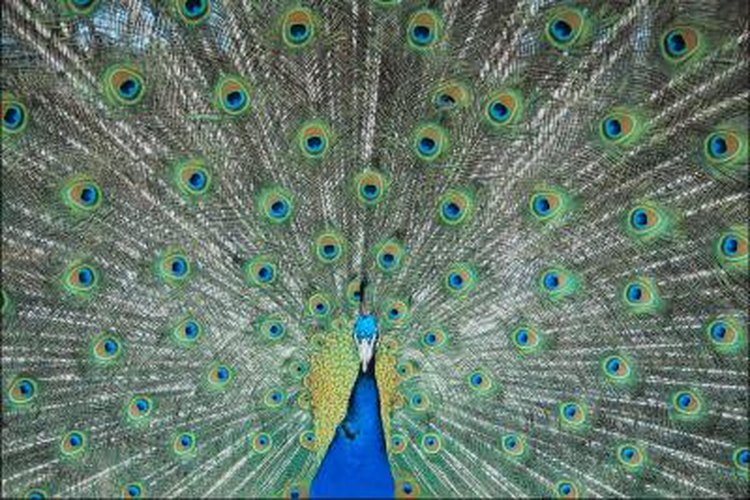
Peacocks, with their resplendent plumage and captivating displays, have long fascinated humans with their ornate beauty and mysterious behavior. Among the most mesmerizing sights is the moment when a peacock opens its feathers in a grand display of color and elegance. In this article, we delve into the significance of this behavior, exploring its biological, behavioral, and cultural implications.
I. Introduction
Peacocks, renowned for their extravagant displays of feathers, exhibit fascinating behavior that has intrigued observers for centuries. The opening of a peacock’s feathers holds particular significance, serving as a spectacle of beauty and a means of communication. Understanding the meaning behind this behavior sheds light on the intricate social dynamics and evolutionary adaptations of these magnificent birds.
II. Display Behavior in Peacocks
Courtship and Mating Rituals One of the most well-known reasons for a peacock to open its feathers is during courtship displays. Male peacocks, or peafowls, spread their vibrant tail feathers in a breathtaking fan-shaped display to attract females. This elaborate ritual, accompanied by vocalizations and strutting, serves to impress potential mates and establish the male’s suitability as a partner.
Territory Defense In addition to courtship, peacocks may open their feathers as a display of dominance and territory defense. When confronted by rivals or perceived threats, males may puff up their feathers and spread their tails to appear larger and more intimidating. This behavior asserts their dominance and communicates their willingness to defend their territory against intruders.
Social Communication Peacocks also use feather displays as a form of social communication within their flock. Subtle variations in feather positioning and movement convey information about the bird’s mood, intentions, and status within the group. By observing these cues, peacocks can navigate social interactions and establish hierarchies within their community.
III. Biological Significance of Feather Display
Attraction of Mates The extravagant plumage of male peacocks plays a crucial role in attracting mates and securing reproductive success. The vibrant colors and intricate patterns of the feathers signal genetic fitness and vitality to potential mates, indicating the male’s ability to provide strong offspring.
Establishment of Dominance Feather displays also serve as a means of establishing dominance and social status within the peacock community. Males with larger, more elaborate tails are often perceived as more dominant and desirable mates, commanding respect and admiration from rivals and potential mates alike.
Communication of Intentions and Emotions Beyond courtship and dominance displays, feather movements can convey a range of intentions and emotions. From subtle gestures to dramatic displays, peacocks use their feathers to express excitement, aggression, fear, and submission. These visual cues help maintain social cohesion and facilitate effective communication within the flock.
IV. Mechanism of Feather Display
Physiological Changes The opening of a peacock’s feathers is accompanied by various physiological changes designed to enhance the visual impact of the display. Muscles controlling the tail feathers contract and relax, allowing the feathers to spread out in a symmetrical pattern. Blood flow to the feathers increases, intensifying their color and sheen.
Behavioral Cues In addition to physiological changes, peacocks employ specific behavioral cues to accentuate their feather display. This may include vocalizations such as calls or cries, as well as synchronized movements and postures that highlight the feathers’ beauty and symmetry.
Evolutionary Adaptations The elaborate feather displays of peacocks have evolved over millennia through the process of sexual selection. Females have historically favored males with the most extravagant plumage, leading to the evolution of increasingly elaborate tail feathers. This evolutionary arms race has resulted in the stunning displays observed in modern peacocks.
V. Cultural and Symbolic Representations
Mythology and Folklore Peacocks have long held symbolic significance in mythology and folklore, often representing qualities such as beauty, immortality, and resurrection. In various cultures around the world, peacocks are associated with gods, goddesses, and legendary figures, serving as symbols of divine grace and celestial splendor.
Symbolism in Various Cultures The symbolism of peacocks varies across different cultures and traditions. In Hinduism, the peacock is associated with the goddess Saraswati and is revered as a symbol of wisdom and learning. In Christianity, the peacock symbolizes resurrection and eternal life, with its iridescent plumage representing the divine presence.
Modern Interpretations In contemporary culture, peacocks continue to inspire awe and fascination as symbols of beauty, extravagance, and self-expression. From fashion and art to literature and advertising, the iconic image of a peacock’s feathers has been reinterpreted and reimagined in myriad ways, reflecting the enduring allure of these magnificent birds.
In conclusion, the opening of a peacock’s feathers is a remarkable display of beauty, communication, and evolutionary adaptation. Whether in courtship rituals, territorial displays, or social interactions, the feather display of a peacock serves as a captivating spectacle that transcends cultural boundaries and captivates the imagination of all who behold it.
